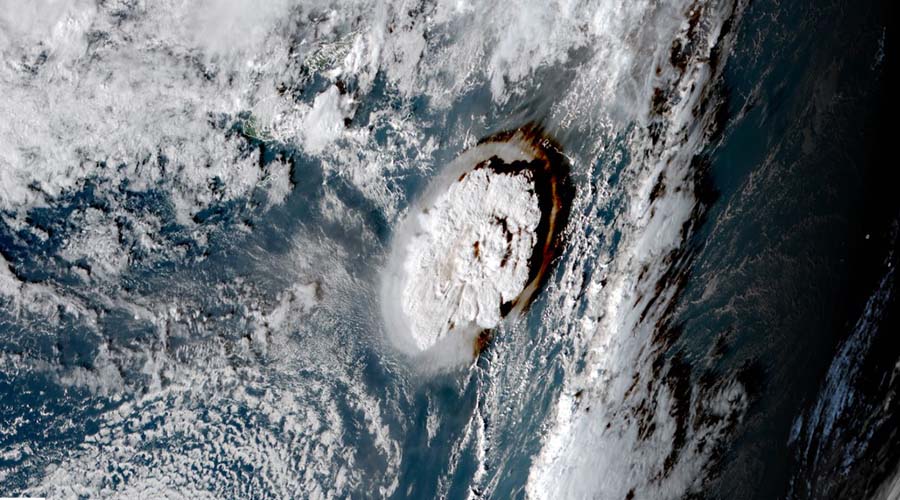 Almost a week after the explosion of the underwater volcano on the island of Hunga Tonga - Hunga Ha’apai, in the South Pacific, which took place on 15 January, the pressure variations associated with the shock waves produced by the event, which, thanks to their energy, travelled several times the entire surface of the Earth, were recorded by the sensors of the cosmic ray detectors of the PolarquEEEst project, located in Ny-Ålesund, in the Svalbard islands, at 78°55'N, the research settlement closest to the North Pole. PolarquEEEst is an experiment of INFN and the Enrico Fermi Research Centre, with the contribution of the Institute of Polar Science of the CNR.
Almost a week after the explosion of the underwater volcano on the island of Hunga Tonga - Hunga Ha’apai, in the South Pacific, which took place on 15 January, the pressure variations associated with the shock waves produced by the event, which, thanks to their energy, travelled several times the entire surface of the Earth, were recorded by the sensors of the cosmic ray detectors of the PolarquEEEst project, located in Ny-Ålesund, in the Svalbard islands, at 78°55'N, the research settlement closest to the North Pole. PolarquEEEst is an experiment of INFN and the Enrico Fermi Research Centre, with the contribution of the Institute of Polar Science of the CNR.
The first shock wave, after travelling for 13,500 km, reached Ny-Ålesund on the same day of the eruption (January 15) at approximately 5:21 PM (Italian time) and was measured by the sensors installed on the three POLA detectors of the PolarquEEEst project, operational at the Arctic station since 2019. A second shock wave, which propagated in the opposite direction and travelled more than 27,000 km, was recorded about 12 hours later, at 5:20 AM the next day (January 16). A third wave, corresponding to the first impulse detected, which continued at an average speed of more than 300 m/s on its journey around the Earth, making one more revolution, was observed after another 36 hours, on 17 January at approximately 5:35 PM. Additional pressure waves were observed in the Ny-Ålesund area, due to subsequent transits of the effects of the event.
PolarquEEEst, hosted in the CNR "Diriglibile Italia" station in Ny-Ålesund, is part of the Extreme Energy Events (EEE) Project and aims to study cosmic rays at sea level by measuring their flux at various latitudes. In particular, four identical detectors based on two planes of scintillators read by silicon sensors have been assembled by students of Italian, Norwegian and Swiss high schools, with the coordination of researchers from the Universities and INFN Divisions of Bologna and Bari and from the Fermi Centre.
- NEWS INFN






